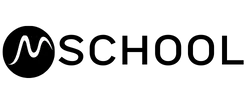Articles & Information
BLOG

Celebrating 85 years of oestradiol - Part 1
“The history of the discovery of oestrogens, the mechanisms of their synthesis, and their therapeutic applications are very important components of the fabric of endocrinology.”
Celebrating 75 years of oestradiol, Journal of Molecular Endocrinology, 2015.
Happy 85th Birthday Oestradiol - Part 1
In 2025 it will be the 85th anniversary of the discovery of oestradiol - the most powerful oestrogen in terms of potency and influence on physiology, made in all humans. For reference, oestrogen is not a single hormone. It is a family of major and minor hormones, of which oestradiol is one.
I find it fascinating that for over 85 years scientists have known of the presence of more than one oestrogen, they are in all humans, and have important roles in all eleven functional networks of all bodies. It seems this really helpful data was kept a secret from everyone, including healthcare practitioners. Reference to oestradiol did not reach mainstream media until the 1990s, and intensified in the 2000s.
I often wonder if this secrecy, or simply lack of public information about oestrogens, has anything to do with it originally being classified as a female hormone. Wouldn’t it be curious if it turns out that this hidden truth, that could have enabled people to understand health and wellbeing in a relevant and meaningful way, was never mentioned because of the tendency of science to use gender to define the function of a group of chemical messengers?
Hormones have no gender. There is not one single hormone exclusive to one human over another. Not one.

When oestradiol would have been heading towards its 50th birthday I was studying Applied Biology from 1986-88 at NESCOT. During this time I did not learn anything about oestrogens and their vital role in human physiology. I learned what was considered to be way more important things about complex formulas around coenzyme Q10 and Krebs cycle, off by heart and draw it!. I also did lots of study on the nervous system, immunology, plant science and developed a new way of preparing bacteria for scanning electron microscopy.
I fondly remember an Immunology lecturer sharing his thoughts on how he had come up with an effective solution to preventing the spread of HIV, and trips to a mushroom farm and a brewery under the category of research into fungi and microorganisms to study their use in the food (and drink) industry.
But, I heard nothing in those two years about how a group of hormones previously associated with menstruation and reproduction exclusively, had now been determined to have a major influence on human physiology, in every single cell of the body. On reflection I would have thought that such a major breakthrough in science would have reached the corridors of any educational establishment with young minds to impress.
By the time oestrogens reached their 75th birthday I was teaching the GCSE and A Level Biology curriculum to post-16 students during 2015/16. I cannot find any reference to oestrogen as a group of hormones in a GCSE or A level Biology textbooks. The only mention of oestrogen then, and still remains the same today, is the two pages in the GCSE textbook about the reproductive cycle in those born with ovaries and a uterus. In those two pages oestrogen is firmly parked as female, and explained to be only important in the development of secondary sexual* characteristics, periods and pregnancy.
Nothing more.
The menstrual cycle is not taught in biological terms in relation to health and well-being and what happens to bone, brain health, or energy levels and mental health, for instance, when ovarian hormone levels trigger changes each, and every day. The ovarian-uterine cyclical activity is only taught in biology classes in two ways:
as the explanation of how humans duplicate themselves, and
the principle of hormones and the endocrine system, in reference to negative and positive feedback loops.
There is no mention in formal education of any age group, that I can find, of how oestradiol (also written estradiol, or E2), is a well known pivotal hormone in mental health, metabolism, neuroprotection, bone health, cardiovascular function and many more systems. Nor how the daily change in levels across the infradian rhythm has a direct impact of the health and wellbeing of someone who is or is about to experience a menstrual cycle.
*Sex hormones are labelled as such because of their role in developing secondary sexual characteristics. In my opinion they need a rebrand.
Why are we under-educating everyone? Who benefits?
Continue reading in Part 2 -

Celebrating 85 years of oestradiol - Part 1
“The history of the discovery of oestrogens, the mechanisms of their synthesis, and their therapeutic applications are very important components of the fabric of endocrinology.”
Celebrating 75 years of oestradiol, Journal of Molecular Endocrinology, 2015.
Happy 85th Birthday Oestradiol - Part 1
In 2025 it will be the 85th anniversary of the discovery of oestradiol - the most powerful oestrogen in terms of potency and influence on physiology, made in all humans. For reference, oestrogen is not a single hormone. It is a family of major and minor hormones, of which oestradiol is one.
I find it fascinating that for over 85 years scientists have known of the presence of more than one oestrogen, they are in all humans, and have important roles in all eleven functional networks of all bodies. It seems this really helpful data was kept a secret from everyone, including healthcare practitioners. Reference to oestradiol did not reach mainstream media until the 1990s, and intensified in the 2000s.
I often wonder if this secrecy, or simply lack of public information about oestrogens, has anything to do with it originally being classified as a female hormone. Wouldn’t it be curious if it turns out that this hidden truth, that could have enabled people to understand health and wellbeing in a relevant and meaningful way, was never mentioned because of the tendency of science to use gender to define the function of a group of chemical messengers?
Hormones have no gender. There is not one single hormone exclusive to one human over another. Not one.

When oestradiol would have been heading towards its 50th birthday I was studying Applied Biology from 1986-88 at NESCOT. During this time I did not learn anything about oestrogens and their vital role in human physiology. I learned what was considered to be way more important things about complex formulas around coenzyme Q10 and Krebs cycle, off by heart and draw it!. I also did lots of study on the nervous system, immunology, plant science and developed a new way of preparing bacteria for scanning electron microscopy.
I fondly remember an Immunology lecturer sharing his thoughts on how he had come up with an effective solution to preventing the spread of HIV, and trips to a mushroom farm and a brewery under the category of research into fungi and microorganisms to study their use in the food (and drink) industry.
But, I heard nothing in those two years about how a group of hormones previously associated with menstruation and reproduction exclusively, had now been determined to have a major influence on human physiology, in every single cell of the body. On reflection I would have thought that such a major breakthrough in science would have reached the corridors of any educational establishment with young minds to impress.
By the time oestrogens reached their 75th birthday I was teaching the GCSE and A Level Biology curriculum to post-16 students during 2015/16. I cannot find any reference to oestrogen as a group of hormones in a GCSE or A level Biology textbooks. The only mention of oestrogen then, and still remains the same today, is the two pages in the GCSE textbook about the reproductive cycle in those born with ovaries and a uterus. In those two pages oestrogen is firmly parked as female, and explained to be only important in the development of secondary sexual* characteristics, periods and pregnancy.
Nothing more.
The menstrual cycle is not taught in biological terms in relation to health and well-being and what happens to bone, brain health, or energy levels and mental health, for instance, when ovarian hormone levels trigger changes each, and every day. The ovarian-uterine cyclical activity is only taught in biology classes in two ways:
as the explanation of how humans duplicate themselves, and
the principle of hormones and the endocrine system, in reference to negative and positive feedback loops.
There is no mention in formal education of any age group, that I can find, of how oestradiol (also written estradiol, or E2), is a well known pivotal hormone in mental health, metabolism, neuroprotection, bone health, cardiovascular function and many more systems. Nor how the daily change in levels across the infradian rhythm has a direct impact of the health and wellbeing of someone who is or is about to experience a menstrual cycle.
*Sex hormones are labelled as such because of their role in developing secondary sexual characteristics. In my opinion they need a rebrand.
Why are we under-educating everyone? Who benefits?
Continue reading in Part 2 -

Celebrating 85 years of oestradiol - Part 1
“The history of the discovery of oestrogens, the mechanisms of their synthesis, and their therapeutic applications are very important components of the fabric of endocrinology.”
Celebrating 75 years of oestradiol, Journal of Molecular Endocrinology, 2015.
Happy 85th Birthday Oestradiol - Part 1
In 2025 it will be the 85th anniversary of the discovery of oestradiol - the most powerful oestrogen in terms of potency and influence on physiology, made in all humans. For reference, oestrogen is not a single hormone. It is a family of major and minor hormones, of which oestradiol is one.
I find it fascinating that for over 85 years scientists have known of the presence of more than one oestrogen, they are in all humans, and have important roles in all eleven functional networks of all bodies. It seems this really helpful data was kept a secret from everyone, including healthcare practitioners. Reference to oestradiol did not reach mainstream media until the 1990s, and intensified in the 2000s.
I often wonder if this secrecy, or simply lack of public information about oestrogens, has anything to do with it originally being classified as a female hormone. Wouldn’t it be curious if it turns out that this hidden truth, that could have enabled people to understand health and wellbeing in a relevant and meaningful way, was never mentioned because of the tendency of science to use gender to define the function of a group of chemical messengers?
Hormones have no gender. There is not one single hormone exclusive to one human over another. Not one.

When oestradiol would have been heading towards its 50th birthday I was studying Applied Biology from 1986-88 at NESCOT. During this time I did not learn anything about oestrogens and their vital role in human physiology. I learned what was considered to be way more important things about complex formulas around coenzyme Q10 and Krebs cycle, off by heart and draw it!. I also did lots of study on the nervous system, immunology, plant science and developed a new way of preparing bacteria for scanning electron microscopy.
I fondly remember an Immunology lecturer sharing his thoughts on how he had come up with an effective solution to preventing the spread of HIV, and trips to a mushroom farm and a brewery under the category of research into fungi and microorganisms to study their use in the food (and drink) industry.
But, I heard nothing in those two years about how a group of hormones previously associated with menstruation and reproduction exclusively, had now been determined to have a major influence on human physiology, in every single cell of the body. On reflection I would have thought that such a major breakthrough in science would have reached the corridors of any educational establishment with young minds to impress.
By the time oestrogens reached their 75th birthday I was teaching the GCSE and A Level Biology curriculum to post-16 students during 2015/16. I cannot find any reference to oestrogen as a group of hormones in a GCSE or A level Biology textbooks. The only mention of oestrogen then, and still remains the same today, is the two pages in the GCSE textbook about the reproductive cycle in those born with ovaries and a uterus. In those two pages oestrogen is firmly parked as female, and explained to be only important in the development of secondary sexual* characteristics, periods and pregnancy.
Nothing more.
The menstrual cycle is not taught in biological terms in relation to health and well-being and what happens to bone, brain health, or energy levels and mental health, for instance, when ovarian hormone levels trigger changes each, and every day. The ovarian-uterine cyclical activity is only taught in biology classes in two ways:
as the explanation of how humans duplicate themselves, and
the principle of hormones and the endocrine system, in reference to negative and positive feedback loops.
There is no mention in formal education of any age group, that I can find, of how oestradiol (also written estradiol, or E2), is a well known pivotal hormone in mental health, metabolism, neuroprotection, bone health, cardiovascular function and many more systems. Nor how the daily change in levels across the infradian rhythm has a direct impact of the health and wellbeing of someone who is or is about to experience a menstrual cycle.
*Sex hormones are labelled as such because of their role in developing secondary sexual characteristics. In my opinion they need a rebrand.
Why are we under-educating everyone? Who benefits?
Continue reading in Part 2 -
a free practitioner's guide
Menstrual Health 101
Key insights
Your First Step to a Cycle-Aware Practice

Start making a real impact today.

Why You Need This Guide
Explore how hormonal rhythms influence metabolism, mood, and well-being at every life stage
Discover how small, practical shifts in your approach can enhance client outcomes, build trust, and set you apart in your field.


